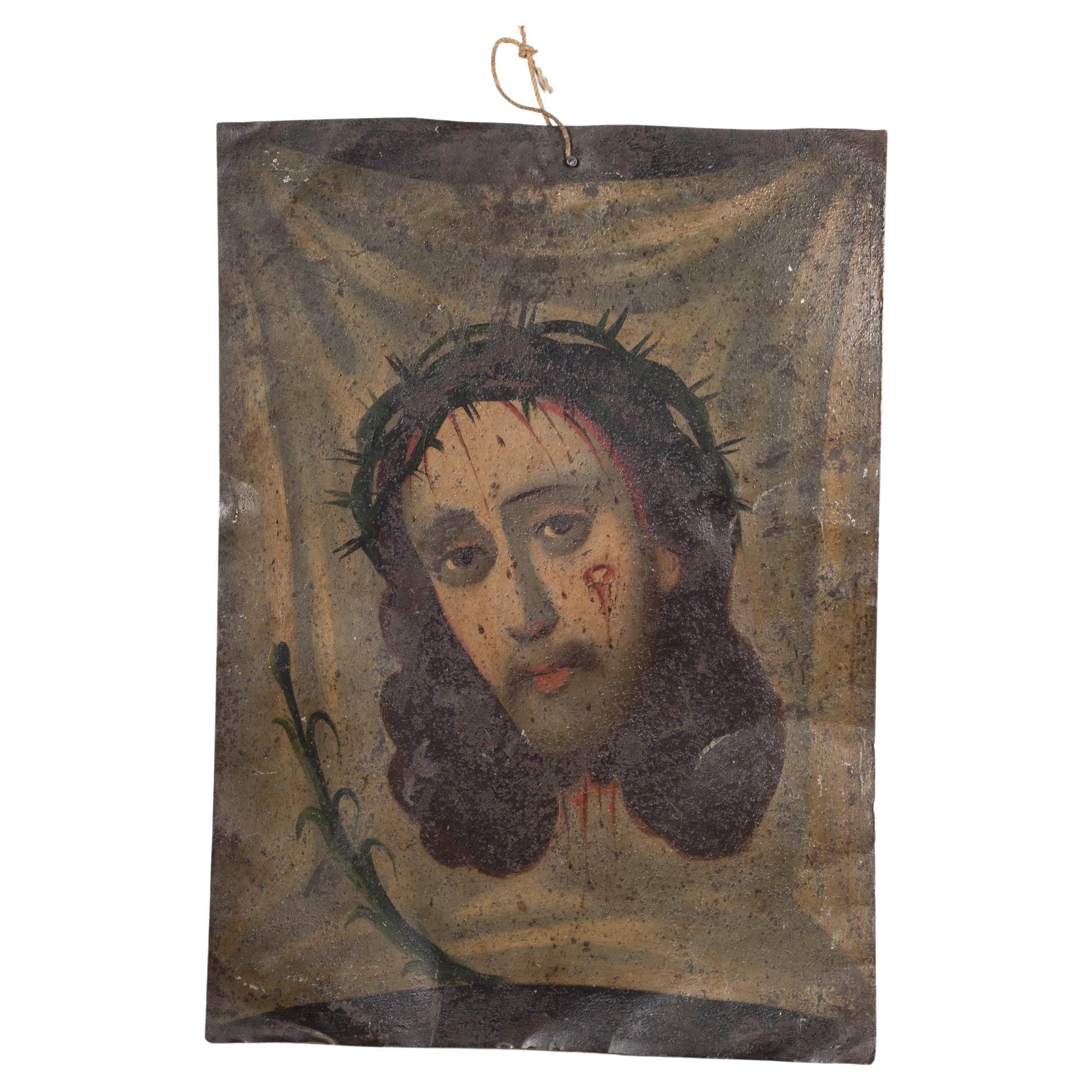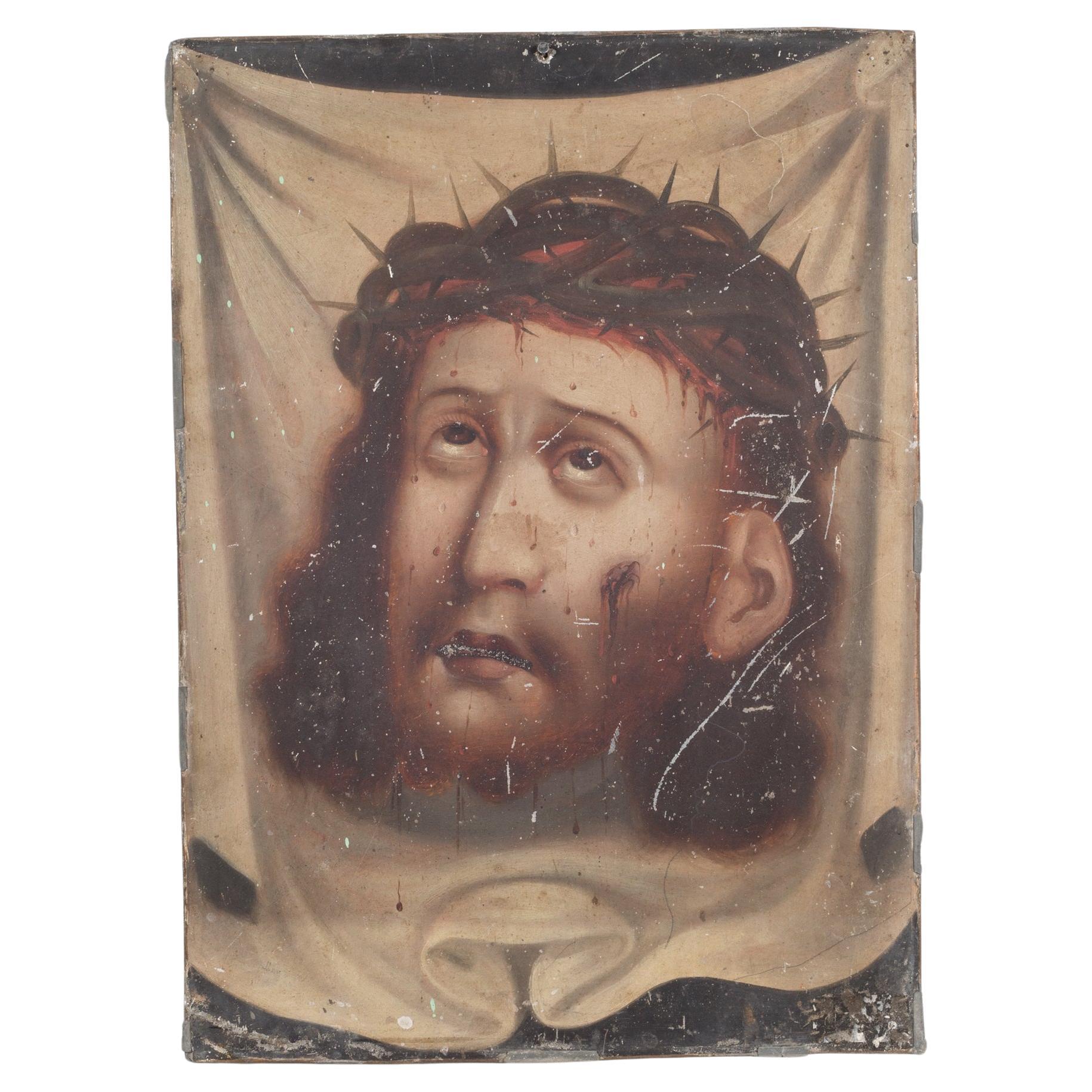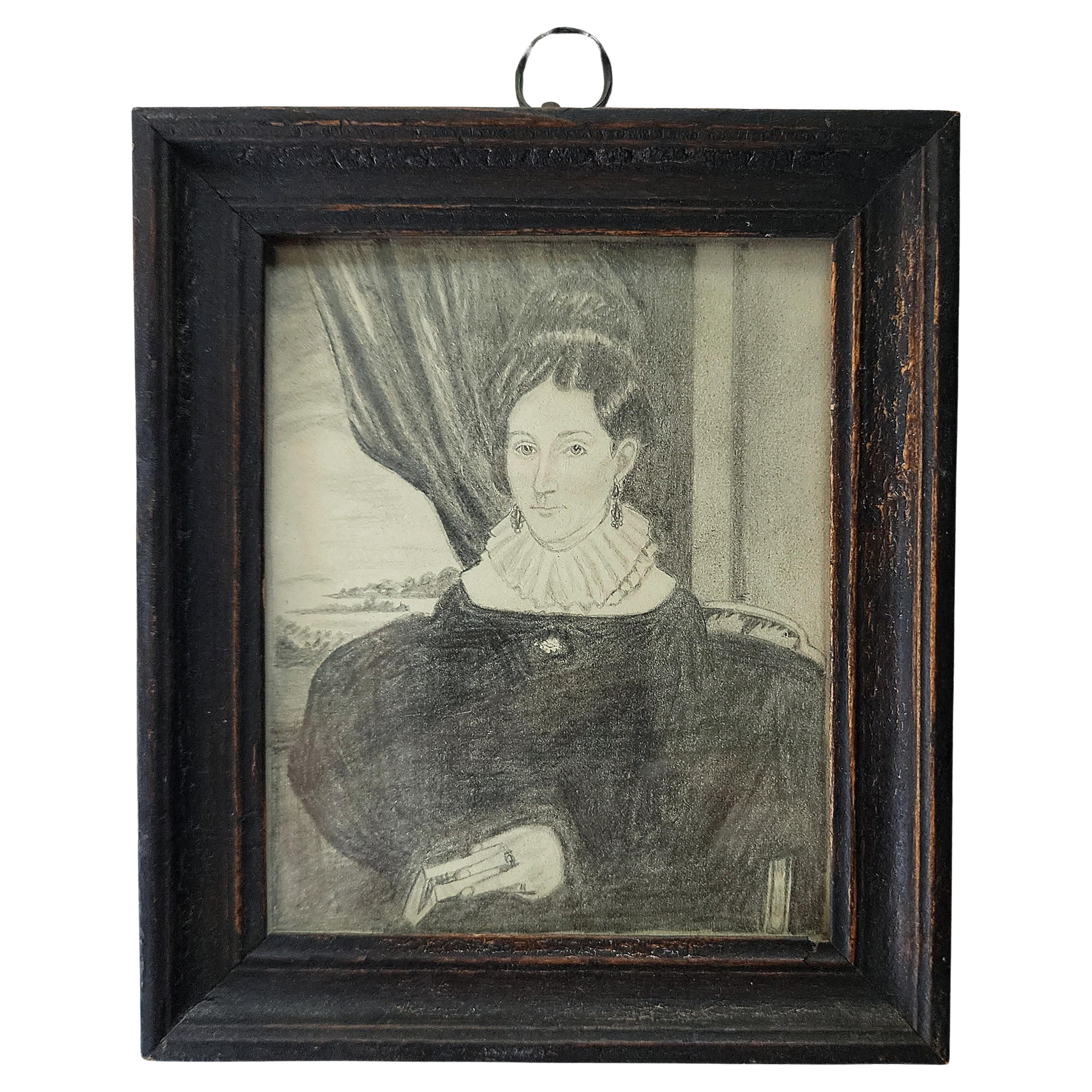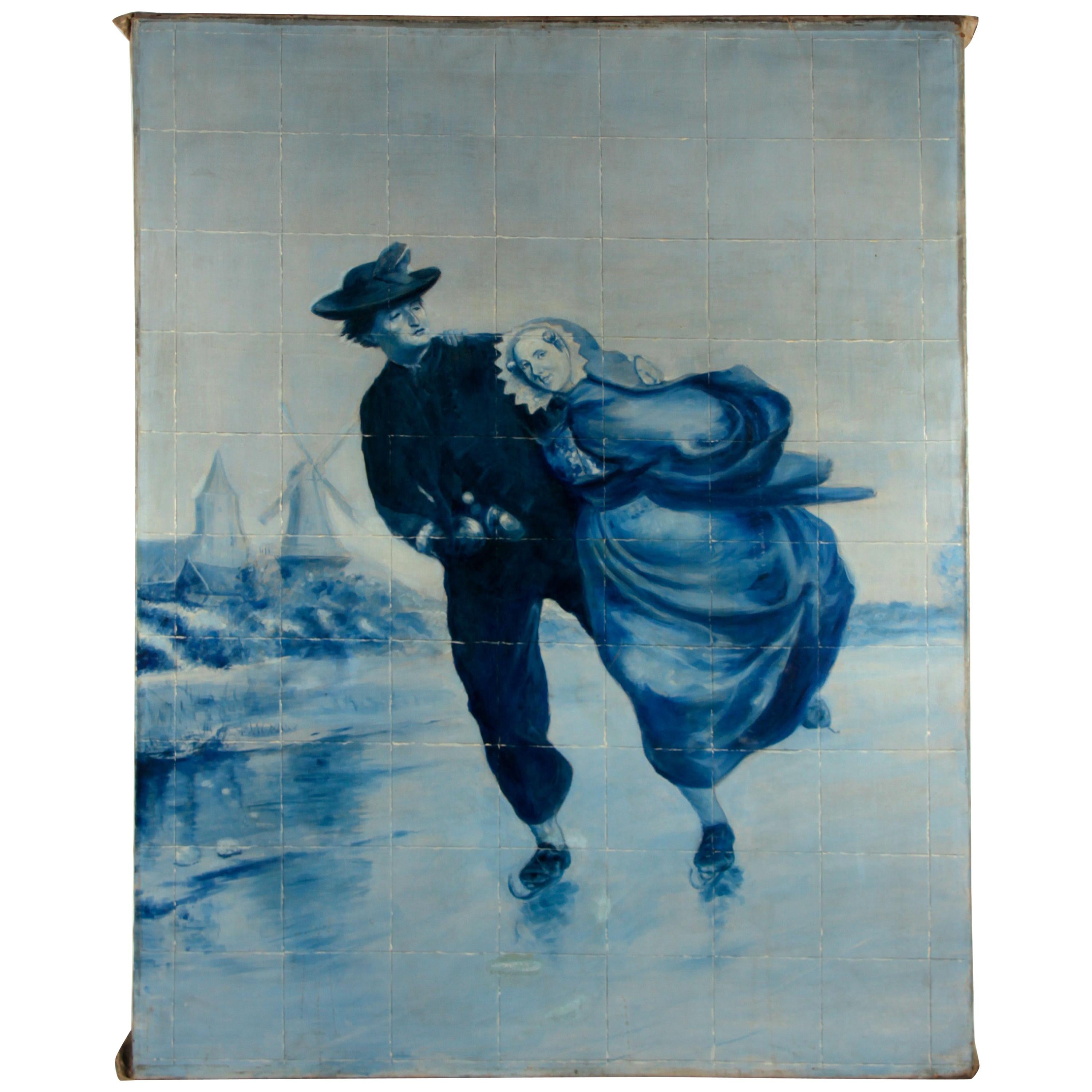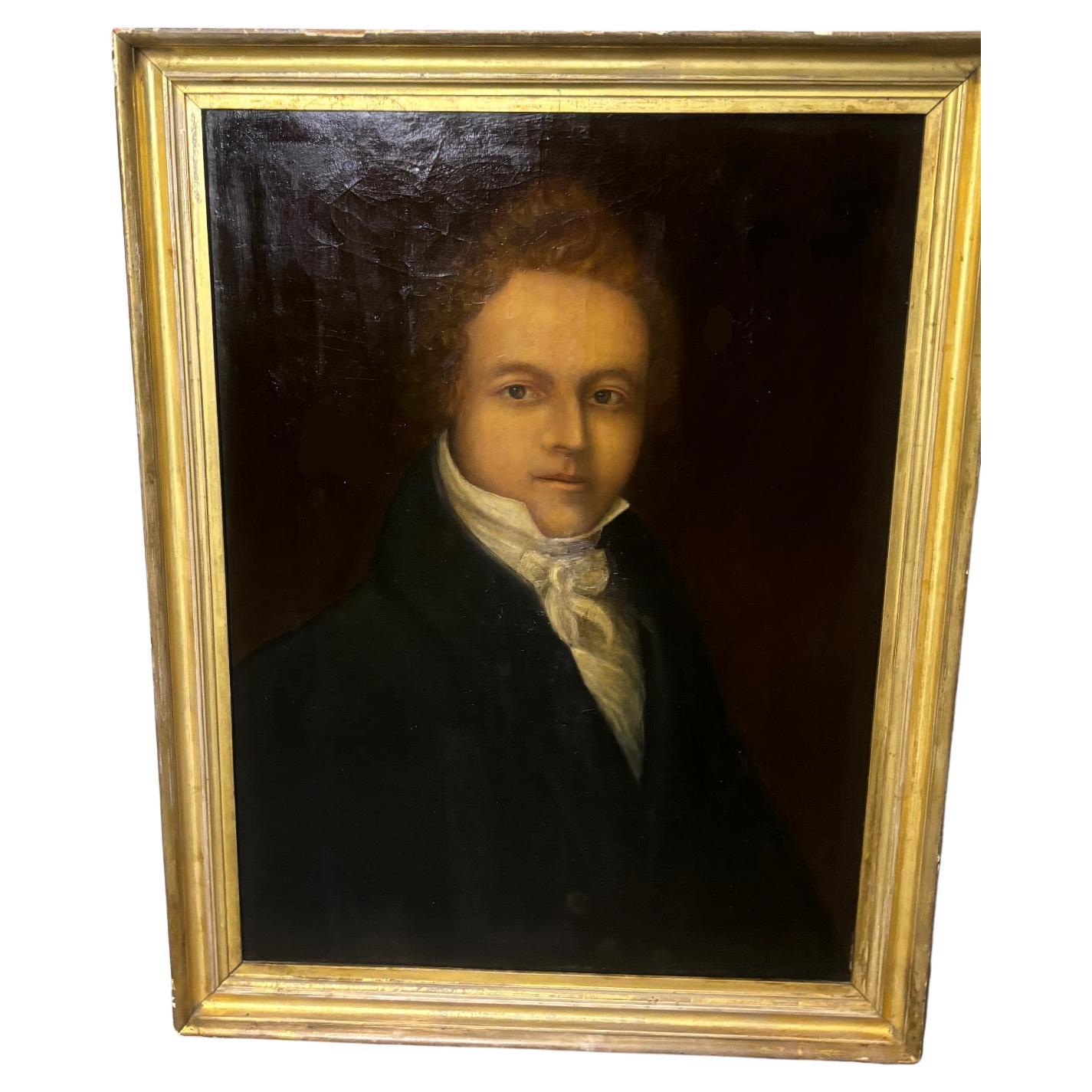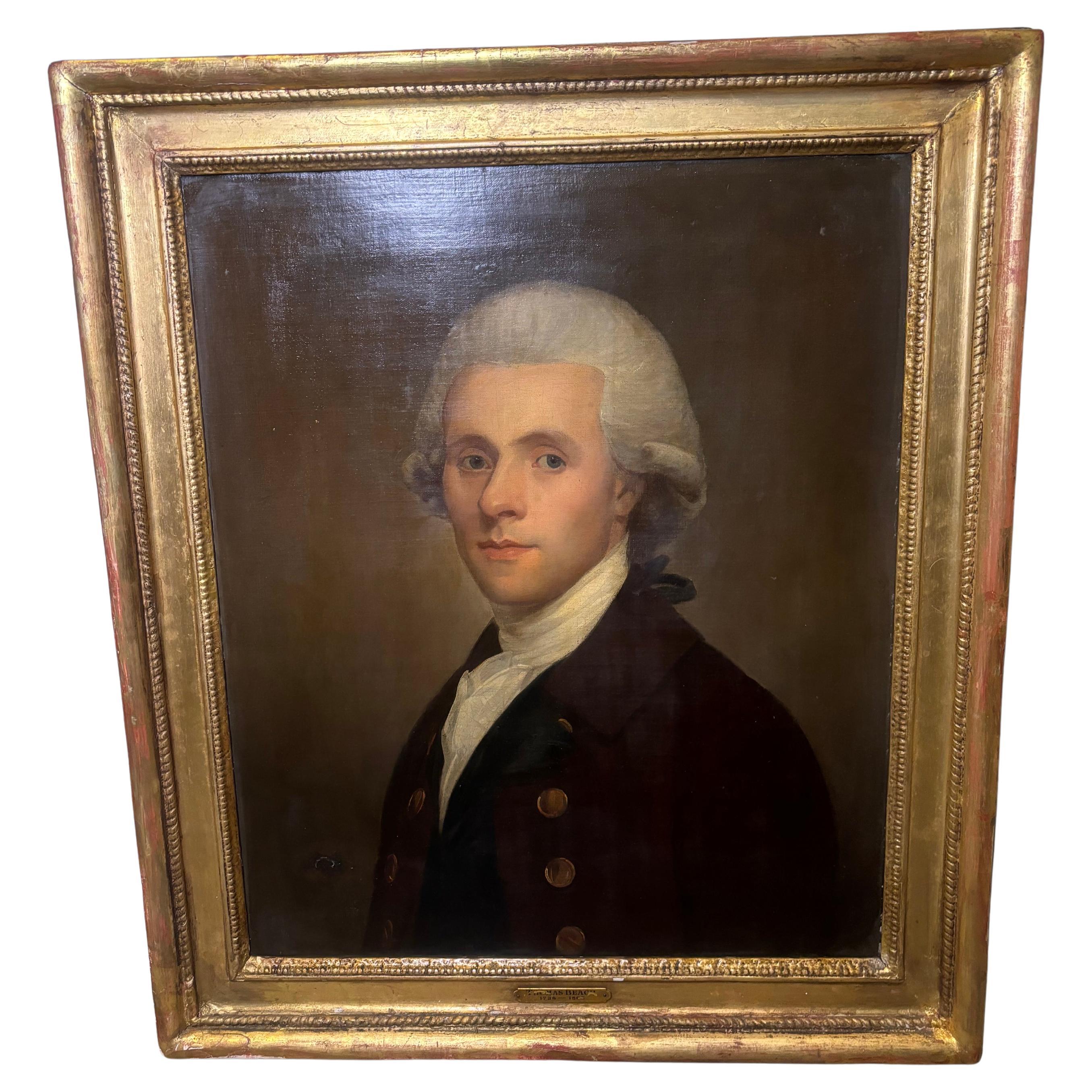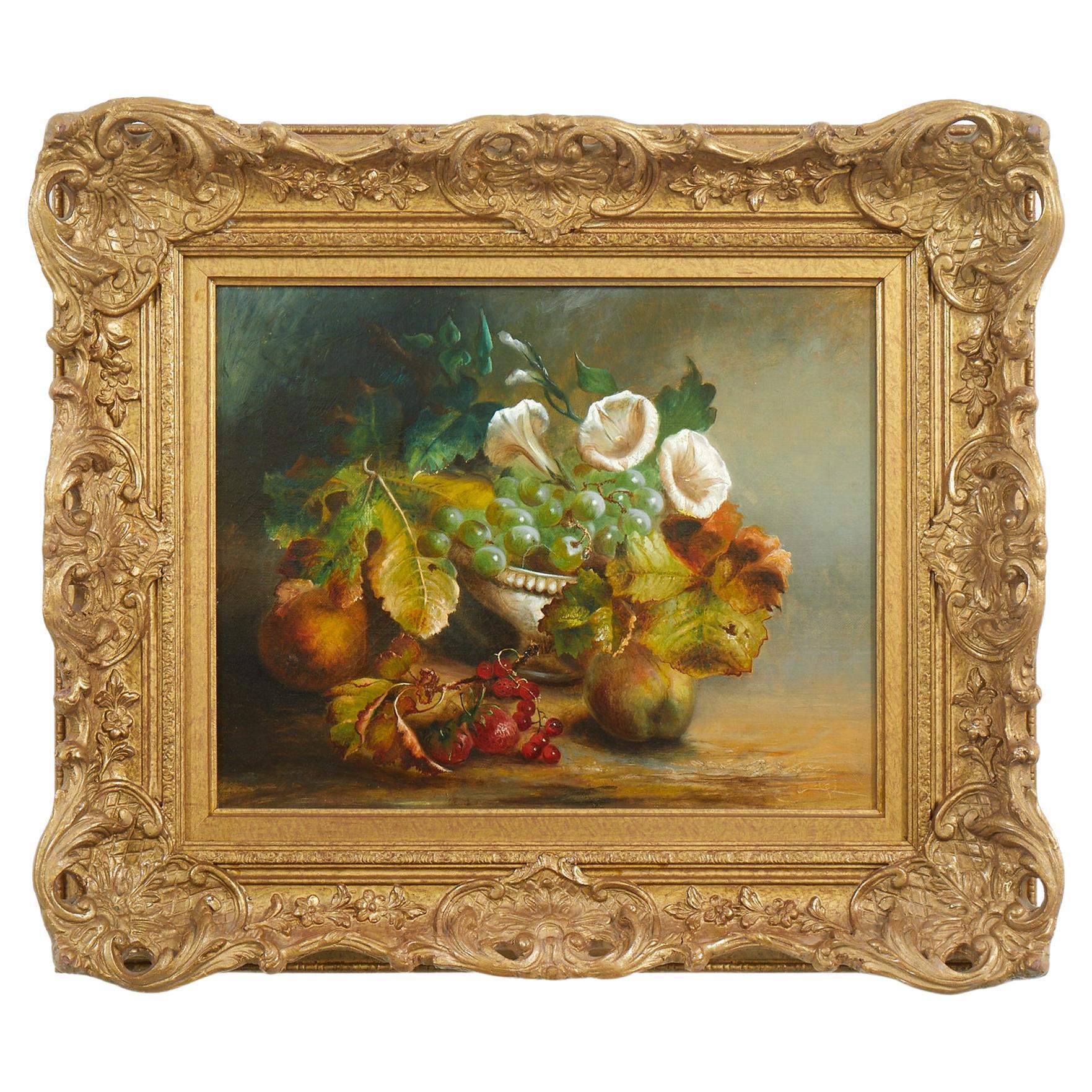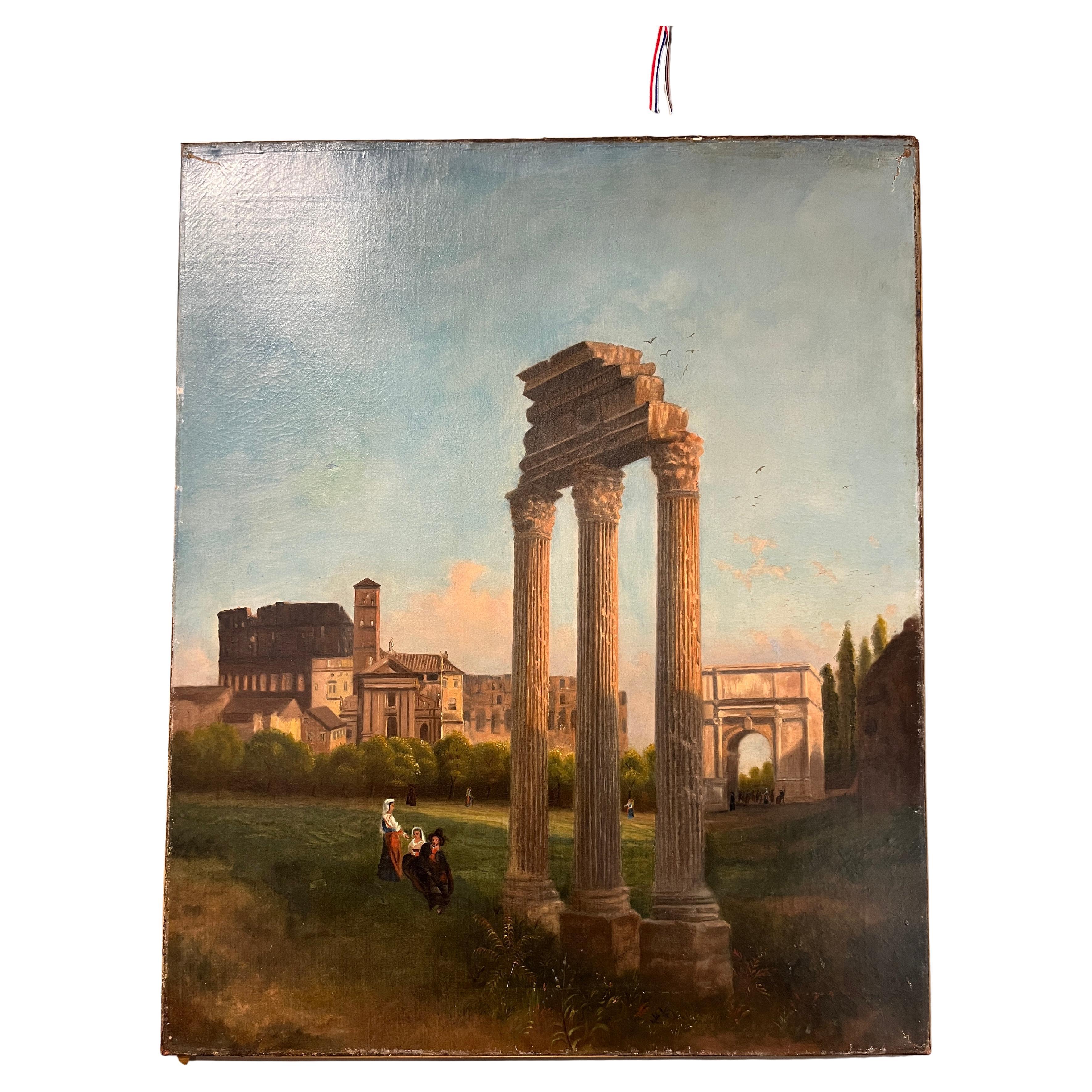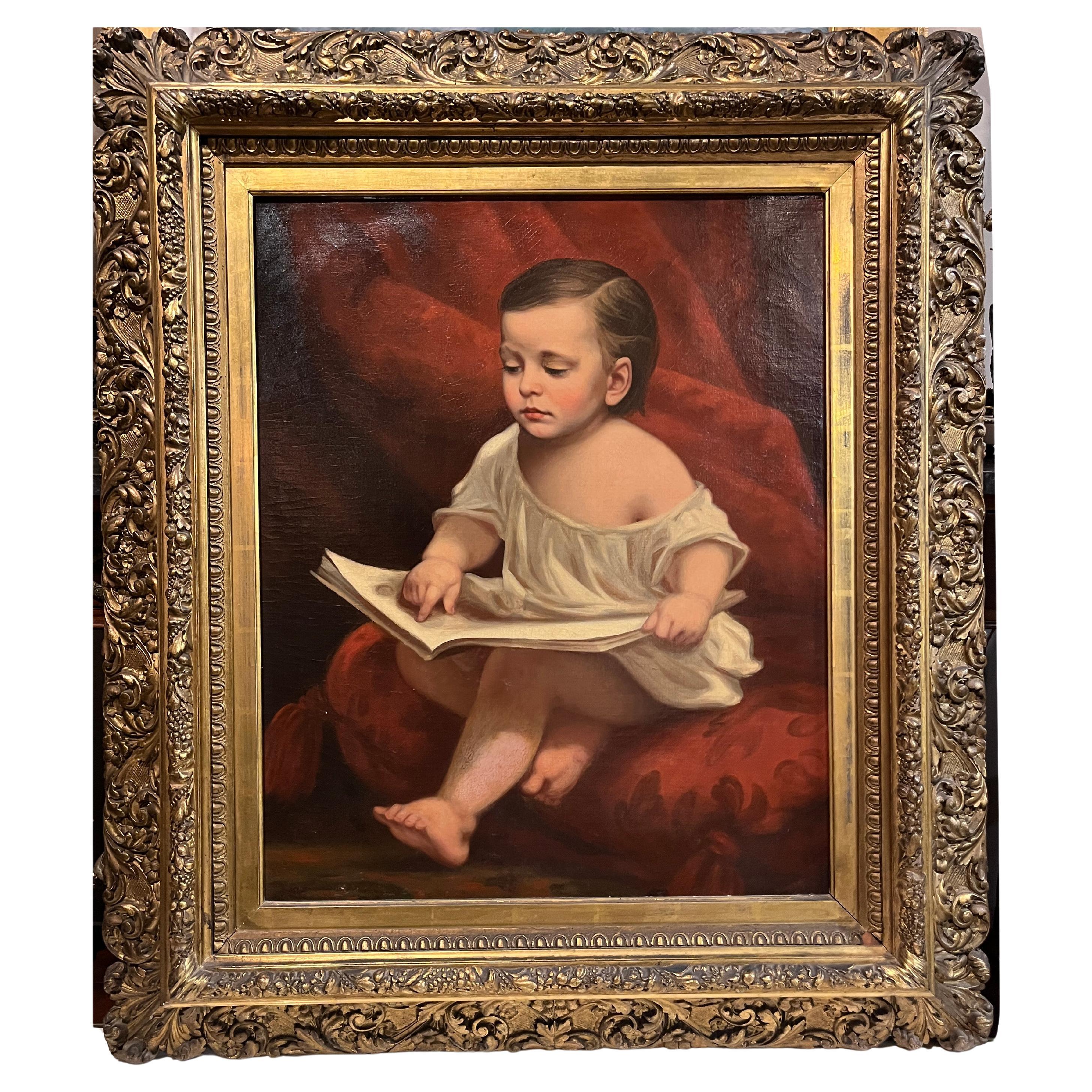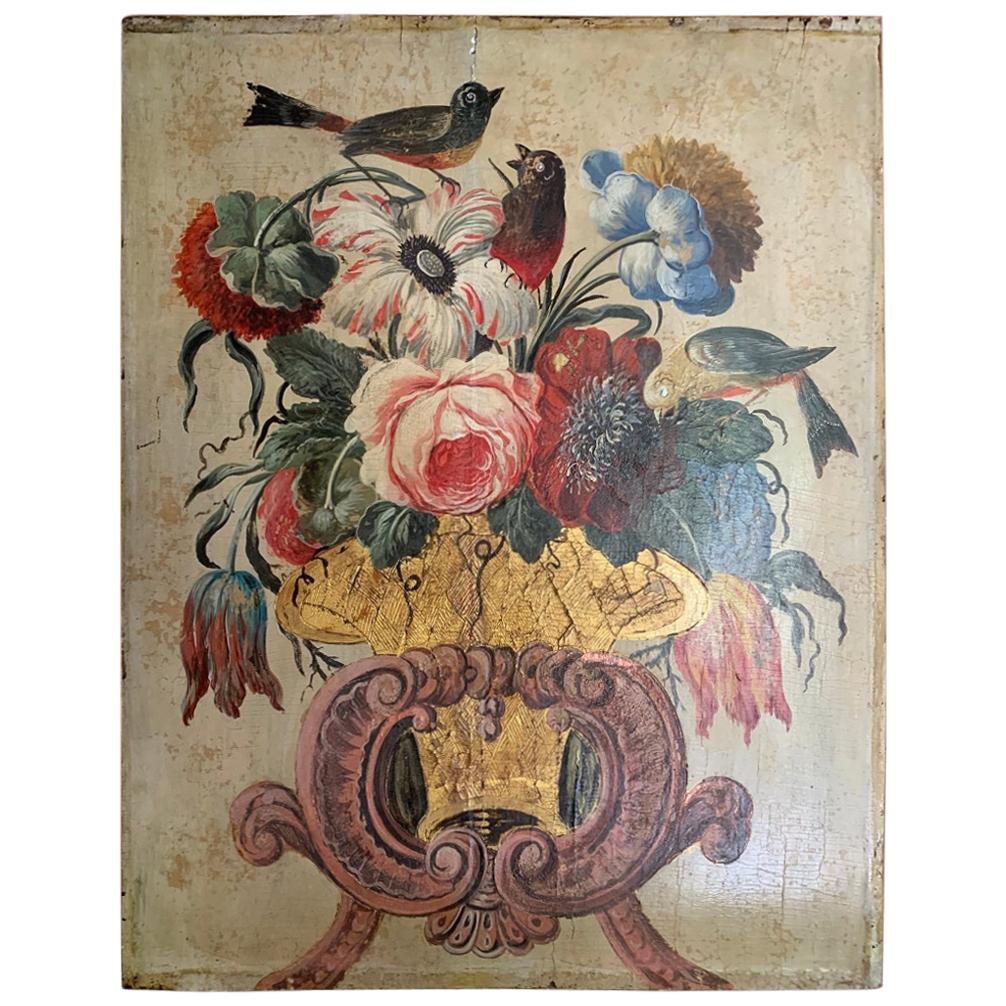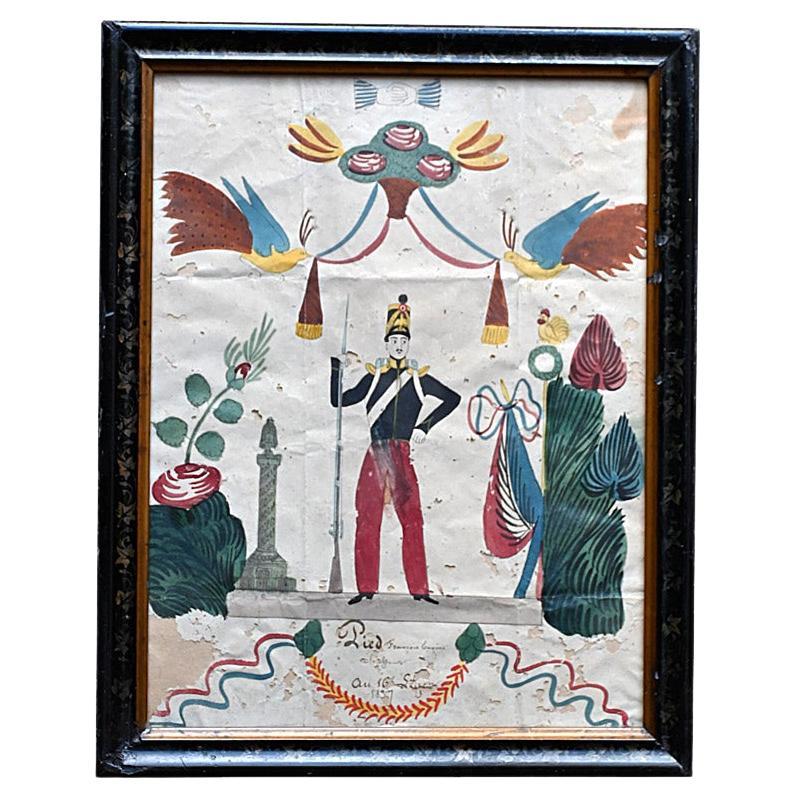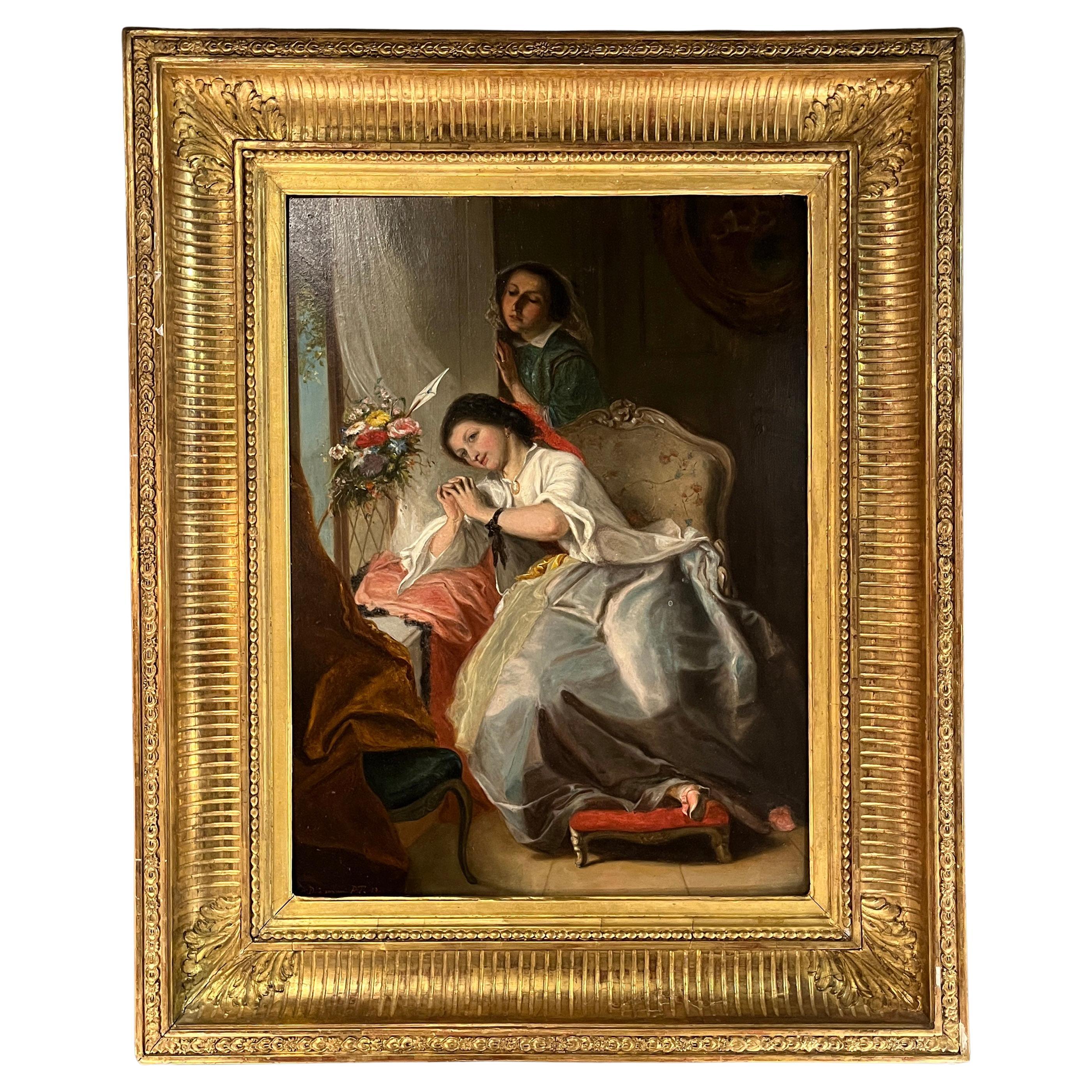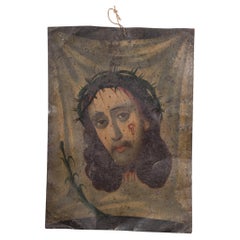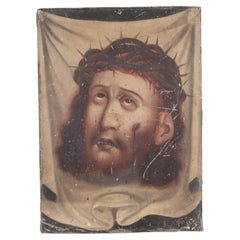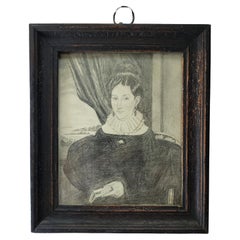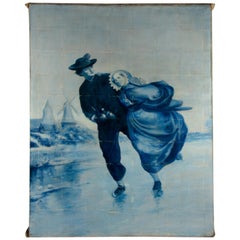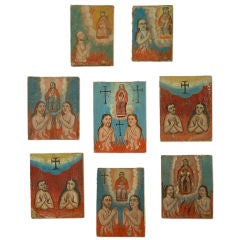
19th Century Mexican Anima Sola Collection - Souls in Purgatory
View Similar Items
1 of 9
19th Century Mexican Anima Sola Collection - Souls in Purgatory
About the Item
The Anima Sola, for those who are unfamiliar, is a departed ancestral soul awaiting judgement in the flames of purgatory. The Anima Sola (Lonely Soul) may be invoked when a family member or loved one dies in sin or conversely, to send an enemy to a state of temporary suffering or misery in purgatory.
Dimensions: largest measures 4.75 inches x 3.5 inches. Smallest measures 3.75 inches x 2.75 inches.
Condition: overall condition is excellent with only minor paint loss.
- Dimensions:Height: 4.75 in (12.07 cm)
- Sold As:Set of 8
- Materials and Techniques:
- Place of Origin:
- Period:
- Date of Manufacture:19th Century
- Condition:scattered paint loss, unrestored, original.
- Seller Location:San Francisco, CA
- Reference Number:1stDibs: U1003238476457
Authenticity Guarantee
In the unlikely event there’s an issue with an item’s authenticity, contact us within 1 year for a full refund. DetailsMoney-Back Guarantee
If your item is not as described, is damaged in transit, or does not arrive, contact us within 7 days for a full refund. Details24-Hour Cancellation
You have a 24-hour grace period in which to reconsider your purchase, with no questions asked.Vetted Professional Sellers
Our world-class sellers must adhere to strict standards for service and quality, maintaining the integrity of our listings.Price-Match Guarantee
If you find that a seller listed the same item for a lower price elsewhere, we’ll match it.Trusted Global Delivery
Our best-in-class carrier network provides specialized shipping options worldwide, including custom delivery.You May Also Like
19th c. Mexican Retablo "Veronica's Veil" c.1880
Located in San Francisco, CA
ABOUT
An original 19th century Mexican folk retablo "Veronica's Veil" or "El Divono Rostro" in Spain . Oil paint on tin.
The Veil of Veronica, known in Italian as the Volto Santo or Holy Face, is a Roman Catholic Relic which, according to legend, bears the likeness of the Face of Jesus that was imprinted on it prior to Jesus' crucifixion. According to Roman Catholicism, Saint Veronica encountered Jesus in Jeruselum on the way to Calvary. When she paused to wipe the sweat (Latin, suda) off his face with her veil, his image was left on the veil.
In the small village of Osa de la Vega in Spain, there lived a couple who led a very pious life. They were Gregorio de la Torre and Isabel Corral. From their father, Juan Montilla, they inherited a picture of the Face of Jesus or the Divino Rostro. A story that is told one day, to the amazement of many who confirmed its veracity, the picture began to perspire with living blood. News of this extraordinary event spread swiftly and widely throughout the land.
CREATOR Unknown.
DATE OF MANUFACTURE c.1880.
MATERIALS AND TECHNIQUES Oil Paint on Tin.
CONDITION Good. Wear consistent with age and use.
DIMENSIONS H 14 in. W 10 in.
HISTORY
Retablos, better known as 'laminas' in Mexico, are small oil paintings on tin, wood and sometimes copper which were used in home altars to venerate the almost infinite number of Catholic saints. The literal translation for 'retablo' is 'behind the altar.' This unique genre of art, deeply rooted in European history, was brought to Mexico with the arrival of the Spanish and then ultimately adopted by New World mestizo natives to become what is known today as the Mexican folk retablo.
The retablo was an art form that flourished in post conquest Mexico and then ultimately, with the introduction of inexpensive mediums such as tin, reached its pinnacle of popularity in the last quarter of the 19th century. With some exceptions, mostly untrained artists from the provinces worked to produce and reproduce these sacred images; some subjects painted more prolifically than others. A typical "retablero" may have reproduced the same image hundreds, if not thousands of times in his or her career.
These oil paintings were sold to devout believers who displayed them in home altars to honor their patron saints. There are virtually hundreds of saints, each invoked to remedy a different situation. "San Ysidro Labrador," the patron saint of farmers, is venerated for good weather...
Category
Antique 19th Century Mexican Folk Art Paintings
Materials
Tin
19th C. Mexican Retablo "Veronica's Veil", c.1880
Located in San Francisco, CA
About
An original 19th century Mexican folk retablo "Veronica's Veil" or "El Divono Rostro" in Spain . Oil paint on tin.
The Veil of Veronica, known in Italian as the Volto Santo or Holy Face, is a Roman Catholic Relic which, according to legend, bears the likeness of the Face of Jesus that was imprinted on it prior to Jesus' crucifixion. According to Roman Catholicism, Saint Veronica encountered Jesus in Jeruselum on the way to Calvary. When she paused to wipe the sweat (Latin, suda) off his face with her veil, his image was left on the veil.
In the small village of Osa de la Vega in Spain, there lived a couple who led a very pious life. They were Gregorio de la Torre and Isabel Corral. From their father, Juan Montilla, they inherited a picture of the Face of Jesus or the Divino Rostro. A story that is told one day, to the amazement of many who confirmed its veracity, the picture began to perspire with living blood. News of this extraordinary event spread swiftly and widely throughout the land.
CREATOR Unknown.
DATE OF MANUFACTURE c.1880.
MATERIALS AND TECHNIQUES Oil Paint on Tin.
CONDITION Good. Wear consistent with age and use.
DIMENSIONS H 14 in. W 10 in.
HISTORY
Retablos, better known as 'laminas' in Mexico, are small oil paintings on tin, wood and sometimes copper which were used in home altars to venerate the almost infinite number of Catholic saints. The literal translation for 'retablo' is 'behind the altar.' This unique genre of art, deeply rooted in European history, was brought to Mexico with the arrival of the Spanish and then ultimately adopted by New World mestizo natives to become what is known today as the Mexican folk retablo.
The retablo was an art form that flourished in post conquest Mexico and then ultimately, with the introduction of inexpensive mediums such as tin, reached its pinnacle of popularity in the last quarter of the 19th century. With some exceptions, mostly untrained artists from the provinces worked to produce and reproduce these sacred images; some subjects painted more prolifically than others. A typical "retablero" may have reproduced the same image hundreds, if not thousands of times in his or her career.
These oil paintings were sold to devout believers who displayed them in home altars to honor their patron saints. There are virtually hundreds of saints, each invoked to remedy a different situation. "San Ysidro Labrador," the patron saint of farmers, is venerated for good weather...
Category
Antique 19th Century Mexican Folk Art Paintings
Materials
Tin
Portrait Miniature In Graphite American 19th Century
Located in Hudson, NY
This is a very beautiful , highly detailed and well executed portrait of a woman. Created in the early nineteenth century with graphite on paper. The sitter can be seen with a book in her hand and a ring on her finger. She is sitting in a painted fancy chair by the window with the drape pulled back...
Category
Antique Early 19th Century American Folk Art Drawings
Materials
Wood, Paper
19th Century Dutch Painting
Located in Esbeek, NL
Dutch painting, oil on canvas
inspired by an tile panel delft blue, circa 1880-Inspired on a Dutch antique Delft Blue tile tableau (composition of individ...
Category
Antique Late 19th Century European Paintings
Materials
Paint
19th Century Portrait of a Gentleman
Located in Los Angeles, CA
19th Century portrait of a gentleman in a black coat. Presented in a period frame.
Category
Antique 19th Century European Other Paintings
Materials
Paint
19th Century Portrait of Gentleman
Located in Los Angeles, CA
'Self-Portrait' Painting presented in a period frame.
Category
Antique 19th Century European Other Paintings
Materials
Paint
Recently Viewed
View AllMore Ways To Browse
Anima Sola
Ice Buckets
Icer Bucket
Mid Century Modern Extendable Tables
Modern Carved Mirror
Ring Chandelier Light
Vintage Murano Glass Pendant Lamps
Antique China Display
Gold And Black Wall Art
Maple Veneer Furniture
Modern Italian Murano And Brass Sconce
New Zealand Rug
Vintage English Table
Vintage Italian Glass Wall Sconce
1970 Glass Top Coffee Table
19th Century Hand Carved Chair
Antique Spanish Silver
Gray Coral
